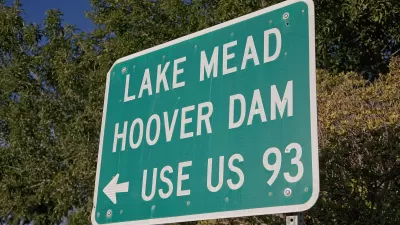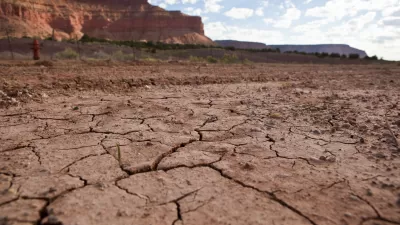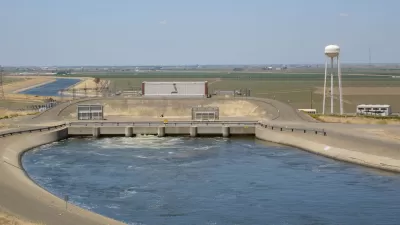The state’s long-term water plan fails to account for the impacts of climate change on water supplies, setting Texas up for a severe water shortage in the coming decades.

Texas officials are ignoring a growing water crisis, warns Erin Douglas in the Texas Tribune, writing that state politicians and agency officials fail to take into account the intensifying effects of climate change. “By late October, water storage in Texas reservoirs had fallen to 67% of capacity, down from 80% a year earlier, according to state data,” Douglas writes.
“Surface water — mainly rivers and reservoirs — accounts for roughly half of Texas’ existing water supply, and is becoming less and less reliable for the state’s fast-growing population as the effects of climate change intensify, experts say.” Yet additional surface water storage is the main tool in Texas’ long-term water plan. “And the Texas Water Development Board, the state agency charged with managing the state’s future water supplies, does not attempt to account for the effects of climate change in its long-term planning,” relying instead solely on data about past droughts.
While state leaders have supported efforts to shore up coastal infrastructure in anticipation of more violent storm surges, “they’ve resisted federal efforts to reduce greenhouse gas emissions that cause climate change — arguing that such efforts would hurt oil and gas jobs in Texas” and have consistently avoided using the term ‘climate change.’
As Dougles explains, “By 2070, demand for water in Texas is expected to increase 9% to 19.2 million acre-feet during a severe drought, up from 17.7 million acre-feet in 2020.” During the same time, the water supply is expected to drop by 18 percent.
See the source article for profiles of several Texas residents affected by water politics and a history of the fight over a new reservoir in the Rio Grande Valley.
FULL STORY: Texas’ plan to provide water for a growing population virtually ignores climate change

Planetizen Federal Action Tracker
A weekly monitor of how Trump’s orders and actions are impacting planners and planning in America.

San Francisco's School District Spent $105M To Build Affordable Housing for Teachers — And That's Just the Beginning
SFUSD joins a growing list of school districts using their land holdings to address housing affordability challenges faced by their own employees.

The Tiny, Adorable $7,000 Car Turning Japan Onto EVs
The single seat Mibot charges from a regular plug as quickly as an iPad, and is about half the price of an average EV.

As Trump Phases Out FEMA, Is It Time to Flee the Floodplains?
With less federal funding available for disaster relief efforts, the need to relocate at-risk communities is more urgent than ever.

With Protected Lanes, 460% More People Commute by Bike
For those needing more ammo, more data proving what we already knew is here.

In More Metros Than You’d Think, Suburbs are Now More Expensive Than the City
If you're moving to the burbs to save on square footage, data shows you should think again.
Urban Design for Planners 1: Software Tools
This six-course series explores essential urban design concepts using open source software and equips planners with the tools they need to participate fully in the urban design process.
Planning for Universal Design
Learn the tools for implementing Universal Design in planning regulations.
Smith Gee Studio
City of Charlotte
City of Camden Redevelopment Agency
City of Astoria
Transportation Research & Education Center (TREC) at Portland State University
US High Speed Rail Association
City of Camden Redevelopment Agency
Municipality of Princeton (NJ)





























